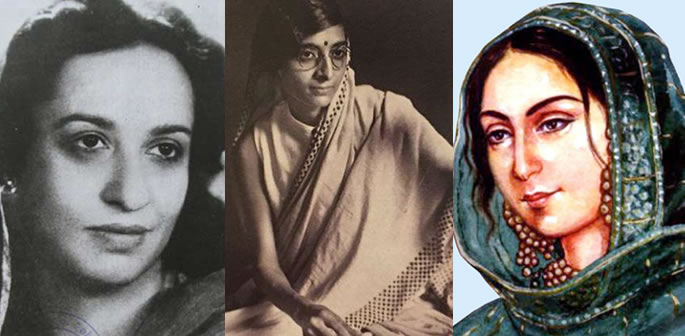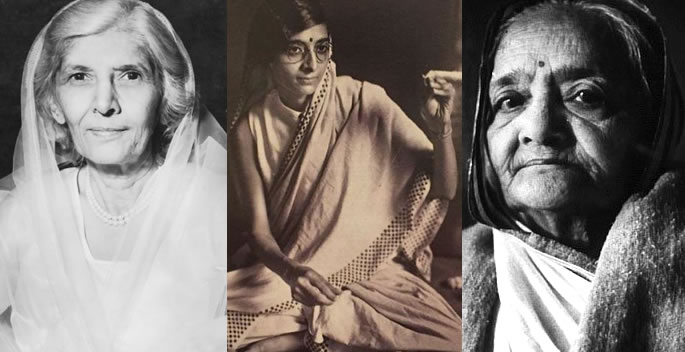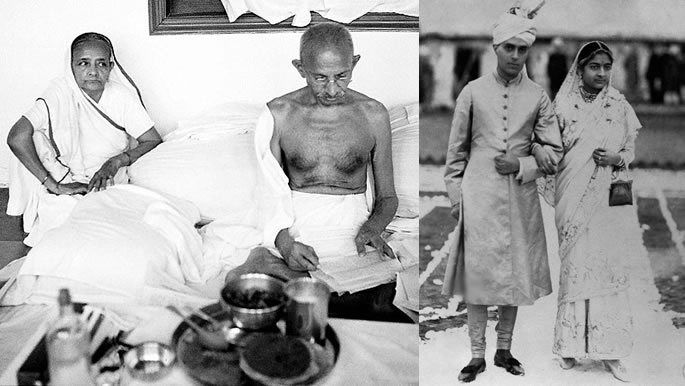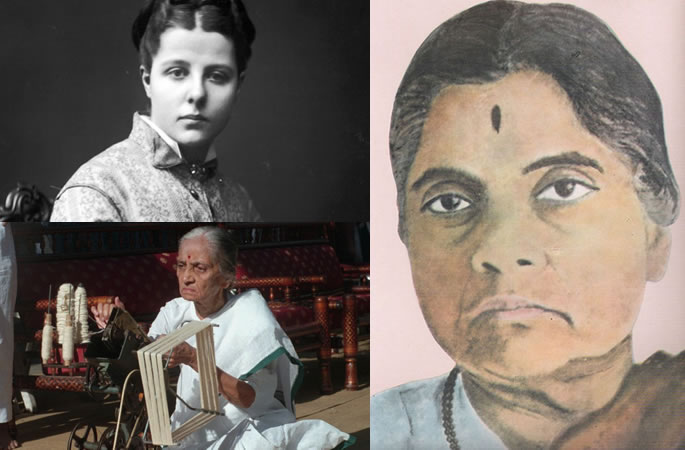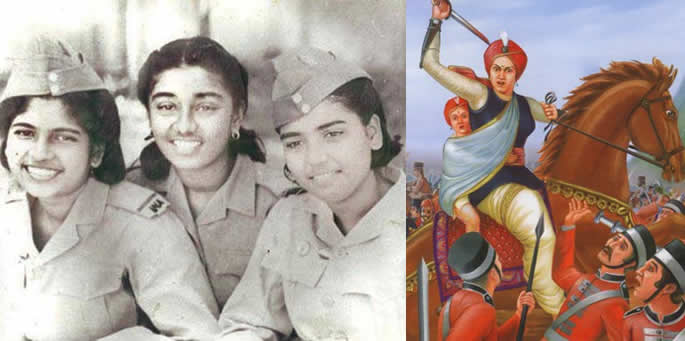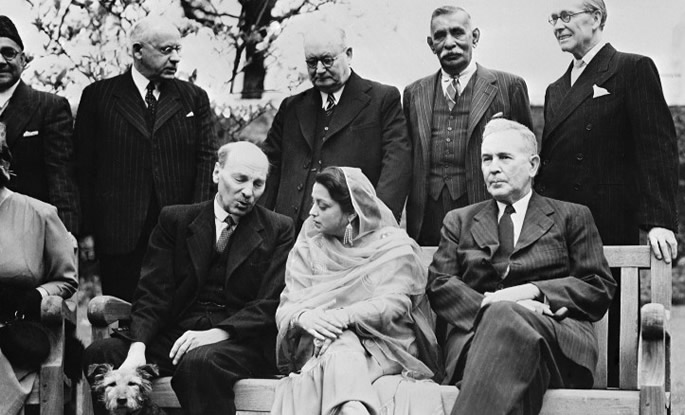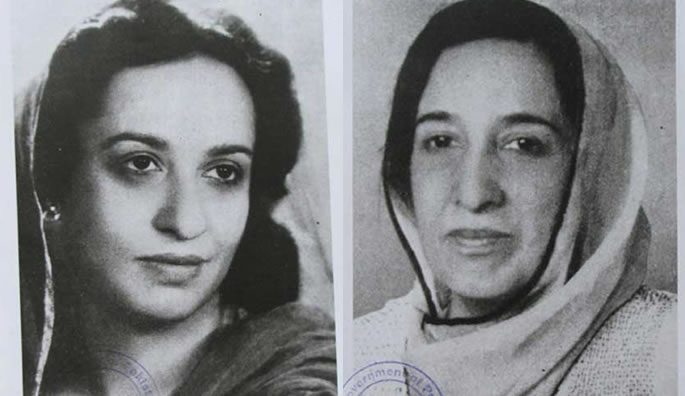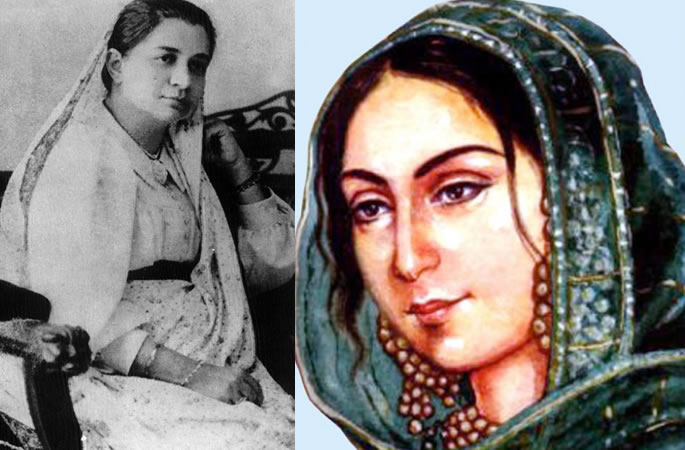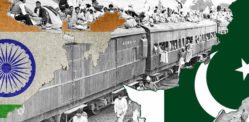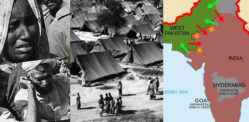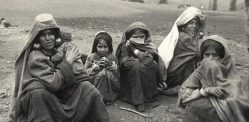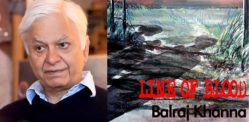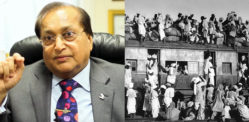"Ours is a peaceful fight. It does not need the use of swords or lathis"
Kasturba Gandhi. Fatima Jinnah. Kamala Nehru. These are three extraordinary women who played an integral role in securing India’s independence from British rule.
History, as told by men, can often overlook the incredible sacrifices made by these ‘invisible’ women who stood just a few steps behind some of India and Pakistan’s greatest leaders and thinkers.
While they rarely sought the political limelight for themselves, they helped to inspire the ideals and ambitions of Mahatma Gandhi, Muhammad Ali Jinnah and Jawaharlal Nehru.
But they are not alone. Many more women battled in their own districts to show their support for the removal of the British Empire.
It is not just the men who became India’s ‘freedom fighters’. These strong and fierce women fought bravely to secure our Independence too. Along the way they faced imprisonment, endured violence and gender discrimination.
Some of these names may not exist in history books, but that by no means lessens their significance. Together, they symbolise a constant stream of strength, tolerance and unwavering support that ran side by side with their male counterparts.
The Female Gandhi, Jinnah and Nehru
As Alex Von Tunzelmann writes in Indian Summer:
“All Gandhi’s most famous tactics – passive resistance, civil disobedience, logical argument, non-violence in the face of violence, emotional blackmail – had come from Kasturbai’s influence. He freely admitted this: ‘I learned the lesson of non-violence from my wife.’”
It was Kasturba Gandhi that made the Mahatma realise that the way Indians were viewed in the eyes of the British was not wholly dissimilar to how women were discriminated against in male-dominated society.
Taking inspiration from his wife’s quiet resilience, the famous leader adopted a Satyagraha approach that would ultimately unsettle British rule.
Despite having no formal education, Kasturba Gandhi was by no means a simple woman. Engaged at the age of 7 and married at the age of 13, Kasturba stood defiantly in her husband’s attempts to control her early on in their marriage.
Left alone for long periods as Gandhi studied abroad, she was extraordinarily self-disciplined, pious, and a devoted mother. Her true spirit shone through when the family moved to South Africa around 1896.
It was here that Gandhi’s eyes were opened to the colonial racism that his skin colour generated and where he first embarked on his political journey of equal rights for Indians as citizens of the British Empire.
Kasturba joined her husband as he created the Phoenix Settlement near to Durban and organised other protests against the mistreatment of Indian immigrants. She was even imprisoned beciause of it but became a source of strength for the other female prisoners around her.
On returning to India, she openly showed her support for satyagraha as part of the Quit India movement. She stepped in for her husband when he spent long periods in prison, and similarly was imprisoned herself on a number of occasions, including at the Aga Khan Palace in Pune, where she eventually died.
In his autobiography, My Experiments with Truth, Gandhi, wrote of his wife:
“According to my earlier experience, she was very obstinate. In spite of all my pressure, she would do as she wished. This led to short or long periods of estrangement between us. But as my public life expanded, my wife bloomed forth and deliberately lost herself in my work.”
Kasturba’s commitment to the freedom struggle was not simply a part of the support she extended to her husband but something she felt for deeply. And for this reason, she was recognised as the ‘Ba’ or mother of the people.
The wife of Jawaharlal, Kamala Nehru, also became a close friend of Kasturba. Some have even suggested that it was Kamala who encouraged her husband to take up the cause of Indian Independence and to follow Gandhi’s peaceful, non-violence approach.
Kamala married at the age of 17. Following her marriage, she became more aware of India’s national struggle. In 1921, she joined the Non-Cooperation Movement and convinced women in Allahabad to burn foreign goods.
When her husband was imprisoned for his plan to criticise the British in a public speech, Kamala read it out for him. Taking a forefront in the women’s movement, she encouraged her peers to join Gandhi’s Civil Disobedience Movement, saying: “Ours is a peaceful fight. It does not need the use of swords or lathis [sticks].”
The British, realising how much of a threat she was, imprisoned her on two occasions. She eventually died of tuberculosis in 1936. Many monuments and institutions in India have been named after her. And even her daughter, Indira Gandhi, India’s first female prime minister, said of her:
“When my father [Jawaharlal Nehru] came into the political field, there was a certain amount of opposition from the family… I think that was the time when my mother’s [Kamala Nehru] influence counted and she supported him fully.”
The sister of Pakistan’s founder, Fatima Jinnah, was similarly a pillar of her brother’s strength. She lived with him, right until his death in 1948, less than a year after Pakistan had been created.
Paying tribute to her sister, the Quaid once said:
“My sister was like a bright ray of light and hope whenever I came back home and met her. Anxieties would have been much greater and my health much worse, but for the restraint imposed by her.”
A strong believer of the two-nation theory, Fatima also established the Women’s Relief Committee soon after Pakistan’s creation in 1947, which later transformed into the All Pakistan Women Association, run by Rana Liaquat Ali Khan. The organisation was pivotal for the settlement of women in the newly-formed country, as well as promoting their civil rights.
Following her brother’s death, however, Pakistan began to fall away from the ideals that it had been founded upon, and Fatima, dubbed as the ‘Mother of the Nation’ (Madar-i Millat) by the Pakistani masses, faced much opposition from the government for her anti-nationalist sentiments.
It would be 1951 before she was allowed to address the nation on her brother’s death anniversary. Even then, her radio broadcast was heavily censored. Fatima also wrote a book, My Brother in 1955. But this would not be published for another 32 years, again severely edited.
In a spectacular move for female empowerment, she also ran in the elections against the military dictator Ayub Khan in 1965, while in her seventies. Although she narrowly lost, she once told her many supporters: “Remember it is women who can mould the character of the youth of the nation.”
Quit India and the Fighting Ranis
It was not just the wives and sisters of these great leaders who played a vital role in India and Pakistan’s independence.
So too did ‘ordinary’ women achieve ‘extraordinary’ feats in their quest to secure the freedom of their nation. Many of these freedom fighters came from extremely humble beginnings, and only some would have been educated.
Yet they all shared a united front. Some faced danger head-on, while others sacrificed their lives for the security of their children and future generations.
One of these incredible women was Usha Mehta who pledged her support for Gandhi’s Quit India movement in 1942 when she ran a secret radio station. She did so against her father’s wishes, who worked under British rule as a judge.
She was arrested for four years after refusing to submit to police interrogation. She was jailed in Yerwada, alongside 250 other female political prisoners.
After being released, she said:
“I came back from jail a happy and, to an extent, a proud person, because I had the satisfaction of carrying out Bapu’s [Gandhi] message ‘do or die’ and of having contributed my humble might to the cause of freedom.”
Mothers, wives and daughters together fought courageously for independence. Some mothers also encouraged their sons to fight like Moolmati.
Her son, Ram Prasad Bismil, was a prominent opponent of the British and played a significant role in the Mainpuri and Kakori Conspiracy. While he was eventually hanged, Moolmati would visit him in jail to express her pride in having a son like him.
Sucheta Kriplani worked alongside Gandhi during the Partition riots. She was even the first female Chief Minister of an Indian state and founded the All India Mahila Congress in 1940. When India achieved its independence on 15th August 1947, she sang the national song, ‘Vande Mataram’ in the Constituent Assembly.
In 1917, Annie Besant, a British socialite and women’s rights activist, was elected as the president of the Indian National Congress. She helped initiate the ‘Home Rule Movement’ with Lokmanya Tilak which sought autonomy for Indian states and took part in numerous protests throughout the freedom struggle.
Bhikaji Cama was a great advocate for gender equality. Part of the Indian Independence Movement, she unveiled the Indian flag at a socialist conference in Germany in 1907. Many roads and buildings have been named after her, and she donated most of her wealth to an orphanage for girls.
Sarojini Naidu was regarded as the ‘Nightingale of India’ and joined politics during the 1905 Partition of Bengal. She helped launch the Women’s Indian Association in 1917. Naidu also became the first woman governor of the United Provinces of Agra and Oudh, and the second woman to be president of the Indian National Congress.
Queens also fought alongside civilians and numerous women sacrificed their lives for the cause. Kittur Rani Chennamma from Karnataka led an army rebellion against the British in 1824. This was part of the ‘Doctrine of Lapse’ that annexed many states of India under British rule. It is thought she is one of the earliest rulers to have fought for Independence.
Velu Nachiyar, formerly a princess of Ramanathapuram, is also considered to be one of the earliest queens to oppose British rule.
Of course, one of the most famous of these royal fighters was Rani Lakshmi Bai of Jhansi. Between 1857 and 1858, she resisted British control of Jhansi, after they refused to accept her adopted son Damodar as legal heir. There is an iconic painting of the Rani on horseback in the middle of a battlefield with her son strapped to her. It became symbolic of the dual role that women played all over India.
Even popular artists and entertainers became embroiled in the political sphere. Theatre actress Kamaladevi Chattopadhyay was one of the initial women to be arrested by the British government for her anti-nationalist sentiments. AS the first woman candidate for the legislative assembly, she promoted female empowerment and improved living conditions, as well as a revival of Indian traditions like handicrafts.
Begum Hazrat Mahal was also a notable figure in the 1857 Indian rebellion. Wife of Nawab Wajid Ali Shah of Oudh, she took the place of her husband after he was exiled and seized control of Lucknow against the East India Company.
Other notable Indian women include the likes of Aruna Asaf Ali who was active during the Salt Satyagraha. Although imprisoned, she continued her protests behind bars, for improved conditions for prisoners. Durgabai Deshmukh was part of Gandhi’s Satyagraha movement and made her mark as a lawyer and social activist.
Kanaklata Barua and Matangini Hazra were both shot dead by the British during processions while bearing the National Flag. Former Indian Army officer Lakshmi Sahgal also led the Rani of Jhansi Regiment, made up of all women soldiers.
The list of women freedom fighters across India is pretty endless. Despite fears of being outcast from their own families, or British retaliation, they stood incredibly strong in the face of their oppressors.
Pakistan Movement and Female Empowerment
Muhammad Ali Jinnah once said:
“There are two powers in the world; one is the sword and the other is the pen. There is a great competition and rivalry between the two. There is a third power stronger than both, that of the women.”
Just as vital as the Quit India movement led by Gandhi and Nehru, were those who supported Jinnah’s ‘two-nation’ theory and went to great lengths to ensure freedom for minorities.
Although many of these women hailed from a conservative background, this did not prevent them from using their voices to advocate justice and equality.
With the help of his sister, Fatima, it was Jinnah who encouraged a social revolution among patriarchal society, calling for the emancipation and empowerment of women.
In 1938, he created the All India Muslim Women’s Sub-Committee of the Muslim League, and over the next decade, many women had gained significant leadership roles. They helped the Quaid mobilise support across various districts.
Of them included Begum Fatima of Lahore. Founder of the Jinnah Islamia College for girls, she helped to rally support from female students.
Jahanara Shahnawaz was also a leading figure for women, calling for a legislation against polygamy.
In 1935, Shahnawaz founded the Punjab Provincial Women’s Muslim League, before becoming part of Jinnah’s Women’s Sub-Committee in 1938.
She was even nominated by Jinnah to represent the Muslim League in the USA at the International Herald Tribune Forum in September 1946, to speak about the need for a separate Muslim state. She reportedly left quite an impression on the audience with her “fluent speeches”.
The beginning of 1947 saw the Pakistan Movement gain considerable popularity. One intelligence report suggested that Frontier Women’s Provincial Muslim League’s annual session in Peshawar saw 1,000 women attend.
In the run-up to the referendum, many of these women travelled across Khyber Pakhtun to rally support from the various districts. In Mardan, Mumtaz Shahnawaz reportedly called out local men for not including women in their local issues.
The likes of Lady Abdullah Haroon from Sindh and Begum Hakem, the President of the Bengal Muslim League, also toured across the Frontier Province and visited Bengal (eventually to became West Pakistan).
In the ultimate statement of female empowerment, one young woman even climbed to the top of the Punjab Secretariat in Lahore and replaced the British flag with a Pakistani one.
Fatima Sughra said in a 2007 interview with The Guardian:
“When I took down the British flag and replaced it with our Muslim League one, I didn’t think I really knew what I was doing. It wasn’t planned. I was rebellious at that age and it seemed like a good idea.
“I was not prepared for it to become such a big symbol of independence. They even gave me a Gold Medal for Services to Pakistan. I was the first ever to receive one.”
Inspiring Women of South Asian who delivered Independence
“No nation can rise to the height of glory unless your women are side by side with you. We are victims of evil customs. It is a crime against humanity that our women are shut up within the four walls of the houses as prisoners. There is no sanction anywhere for the deplorable condition in which our women have to live.” Muhammad Ali Jinnah
It is incredible to think how one idea or dream can gain such momentum and even become a reality. Such is the case for these women who fought for freedom and Independence.
While, admittedly, 1947 Partition brought with it many unspeakable horrors, particularly for women who were brutally assaulted, raped and killed.
But so too did Independence invite a renewed sense of identity for millions of women across India and Pakistan.
It forced women to step out of their homes and fight for what they believed in. And their unwavering faith in justice, freedom and independence from their oppressors is inspiring for all.
Needless to say, their resilience and sacrifice should never be forgotten.
In our next article, DESIblitz explores the aftermath of 1947 Partition and a new beginning for a free and independent India and Pakistan.



















































